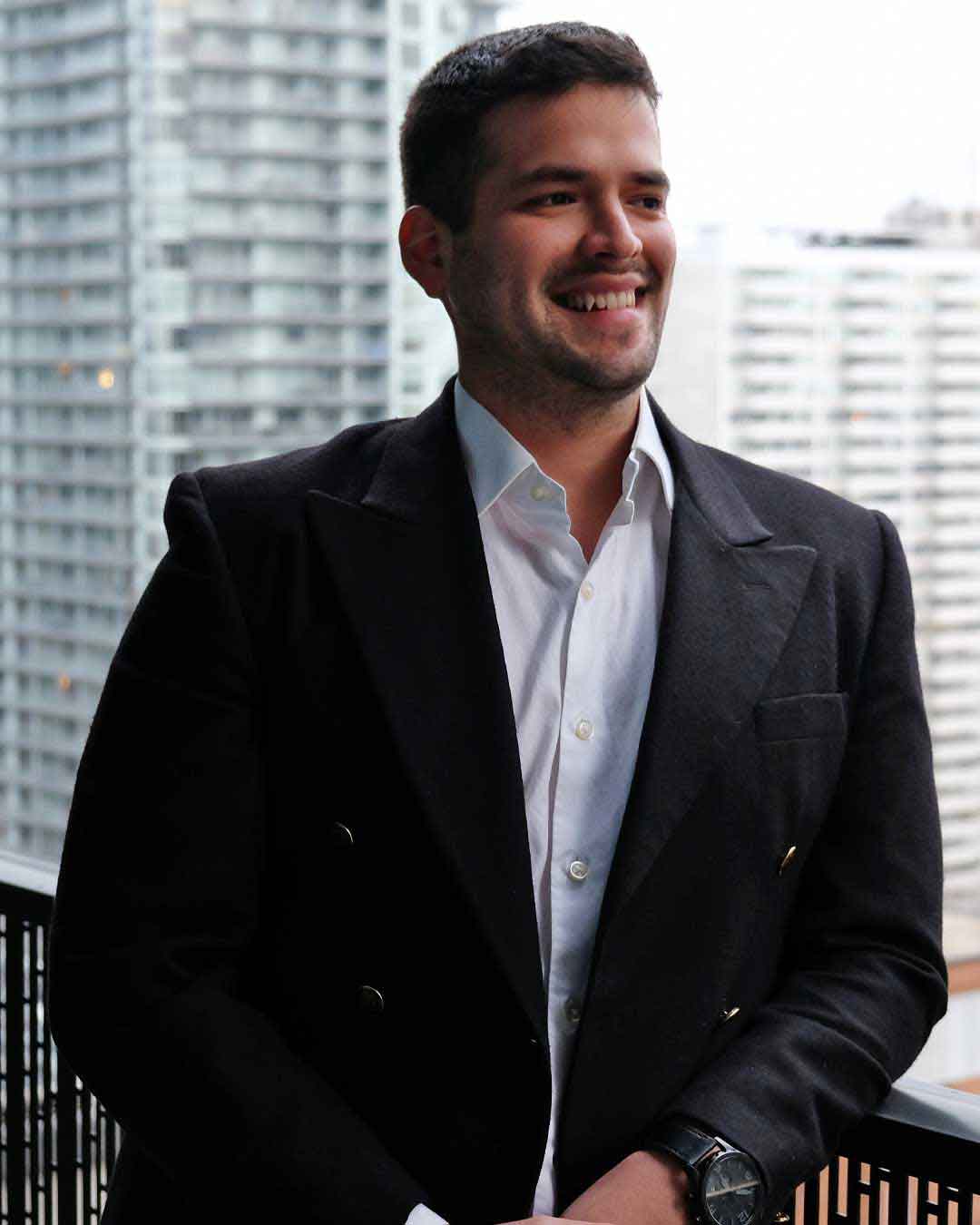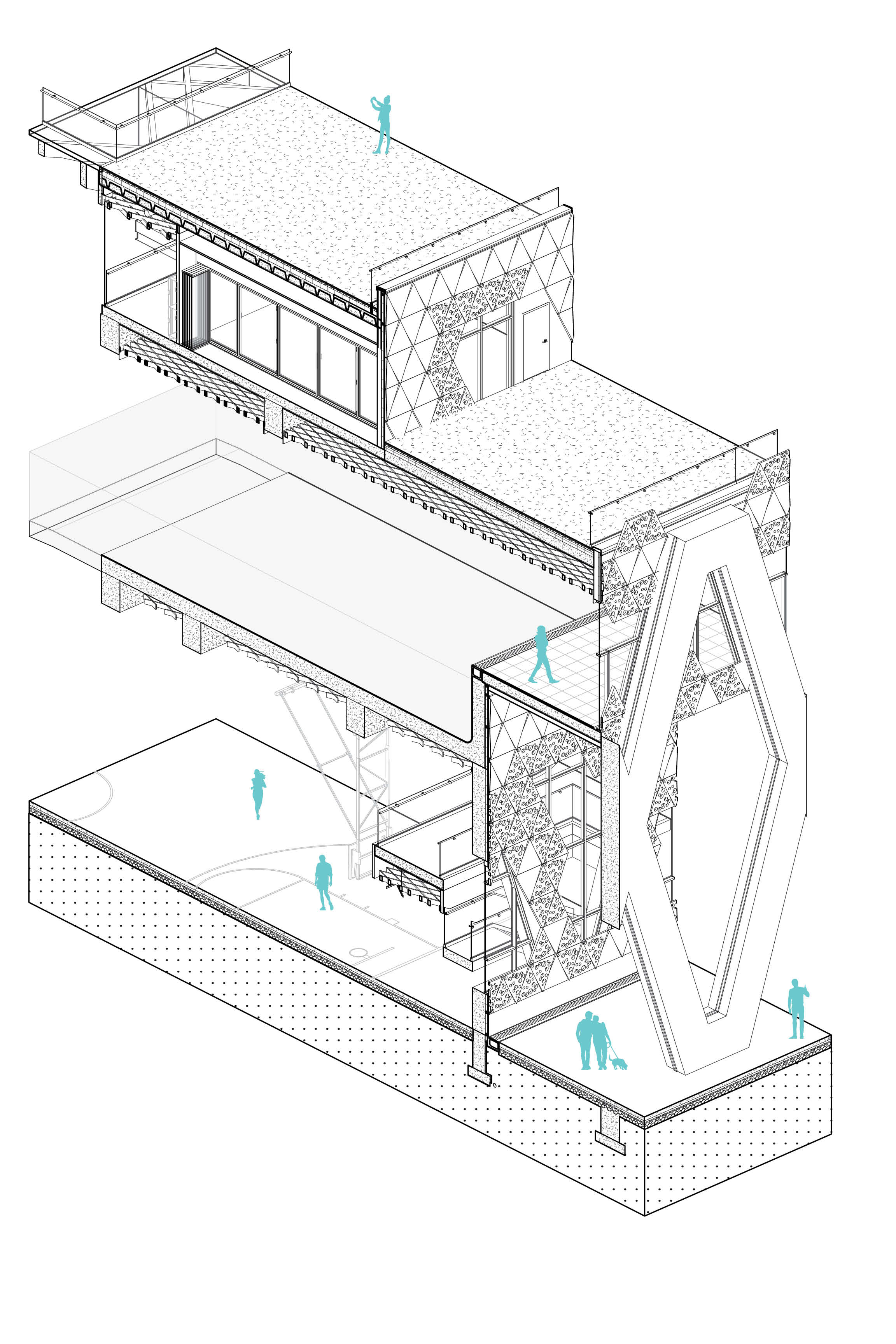UNDERGRADUATE
Cesar Rodriguez Perfetti—NORR Group Jack Lemay Memorial Award
![]()
Cesar Rodriguez Perfetti—NORR Group Jack Lemay Memorial Award

About the Award
An award created by NORR in 2004 to provide financial support for students in the Department of Architectural Science. The award will be given to a student in Architecture who has completed their third year and has demonstrated an awareness and accomplishment in construction technology as well as academic excellence.
As an architecture student at Toronto Metropolitan University, I have had the opportunity to lead several group design-build projects, demonstrating excellence in project management. Balancing these projects alongside academic, work, and wellness commitments has been both challenging and rewarding.
One significant leadership experience was co-leading the design-build process for the Winterstations Pavilion Project. Under my guidance, the TMU team proposed a conceptual design that reflected both a deep understanding of our fabrication workshop’s capabilities and a thoughtful approach to the competition’s theme. Effective communication was critical for managing this project, as seamless integration between design and construction is essential in architecture. To facilitate this, I established communication protocols by organizing regular team meetings, defining key roles, and implementing a shared digital platform to track progress and tasks. I assigned task owners and set project milestones to ensure alignment and accountability across the team. This approach enabled members to share updates in real time and address issues promptly, helping us remain agile and adaptive.
This project marked a significant achievement in my academic journey, as I balanced a full course load while preparing my portfolio for the co-op program. Beyond achieving personal success, I also represented the university’s high standards in a prominent competition, showcasing TMU’s values of social engagement and excellence in project delivery. The pavilion was later selected for reinstallation at Spring Stations, extending the project’s life and impact. Its modular, prefabricated design allowed for efficient setup, with each module installed in under two hours at both events.
In addition to communication, managing workflow and deadlines is a critical aspect of project management. During a project to design an outdoor exhibition display pavilion at Allan Gardens, titled Protest, People, and the Park, I implemented a Gantt chart to break the project into distinct stages: design development, material sourcing, prototyping, and final construction. By structuring the project into manageable steps, I coordinated efforts across various departments, including the university’s artist team and the Department of Architectural Science, ensuring a cohesive and efficient workflow. We meticulously tracked materials used in prototypes and developed detailed budgets for each phase. This allowed us to present our design at various stages to clients, ensuring transparency and aligning their expectations with our budget and production timelines. To meet these expectations, I coordinated both in-house fabricators and external suppliers, ensuring timely material delivery while adhering to the university’s budget constraints.
Flexibility and problem-solving are also essential in managing the unpredictable nature of design-build projects. For instance, when a key material became unavailable, I quickly worked with the team to source an alternative, enabling us to avoid delays. We collectively assessed substitute materials, comparing them for cost-effectiveness and structural integrity. This adaptability helped maintain momentum and allowed us to make real-time adjustments without sacrificing timelines.
These project management skills have proven invaluable in design studio work as well. I apply the same structuring, communication, and organization strategies, which enable my team and me to stay focused on design objectives and address details early in the process. My background in design-build has deepened my understanding of construction processes, life cycles, and the three pillars of sustainability—environmental, social, and economic. This knowledge allows me to make informed decisions that consider each phase of a building’s lifecycle and its impact. From sourcing materials to evaluating recyclability and energy efficiency, I have learned to incorporate sustainable design practices and develop solutions that balance aesthetics, durability, and ecological responsibility.
An award created by NORR in 2004 to provide financial support for students in the Department of Architectural Science. The award will be given to a student in Architecture who has completed their third year and has demonstrated an awareness and accomplishment in construction technology as well as academic excellence.
As an architecture student at Toronto Metropolitan University, I have had the opportunity to lead several group design-build projects, demonstrating excellence in project management. Balancing these projects alongside academic, work, and wellness commitments has been both challenging and rewarding.
One significant leadership experience was co-leading the design-build process for the Winterstations Pavilion Project. Under my guidance, the TMU team proposed a conceptual design that reflected both a deep understanding of our fabrication workshop’s capabilities and a thoughtful approach to the competition’s theme. Effective communication was critical for managing this project, as seamless integration between design and construction is essential in architecture. To facilitate this, I established communication protocols by organizing regular team meetings, defining key roles, and implementing a shared digital platform to track progress and tasks. I assigned task owners and set project milestones to ensure alignment and accountability across the team. This approach enabled members to share updates in real time and address issues promptly, helping us remain agile and adaptive.
This project marked a significant achievement in my academic journey, as I balanced a full course load while preparing my portfolio for the co-op program. Beyond achieving personal success, I also represented the university’s high standards in a prominent competition, showcasing TMU’s values of social engagement and excellence in project delivery. The pavilion was later selected for reinstallation at Spring Stations, extending the project’s life and impact. Its modular, prefabricated design allowed for efficient setup, with each module installed in under two hours at both events.
In addition to communication, managing workflow and deadlines is a critical aspect of project management. During a project to design an outdoor exhibition display pavilion at Allan Gardens, titled Protest, People, and the Park, I implemented a Gantt chart to break the project into distinct stages: design development, material sourcing, prototyping, and final construction. By structuring the project into manageable steps, I coordinated efforts across various departments, including the university’s artist team and the Department of Architectural Science, ensuring a cohesive and efficient workflow. We meticulously tracked materials used in prototypes and developed detailed budgets for each phase. This allowed us to present our design at various stages to clients, ensuring transparency and aligning their expectations with our budget and production timelines. To meet these expectations, I coordinated both in-house fabricators and external suppliers, ensuring timely material delivery while adhering to the university’s budget constraints.
Flexibility and problem-solving are also essential in managing the unpredictable nature of design-build projects. For instance, when a key material became unavailable, I quickly worked with the team to source an alternative, enabling us to avoid delays. We collectively assessed substitute materials, comparing them for cost-effectiveness and structural integrity. This adaptability helped maintain momentum and allowed us to make real-time adjustments without sacrificing timelines.
These project management skills have proven invaluable in design studio work as well. I apply the same structuring, communication, and organization strategies, which enable my team and me to stay focused on design objectives and address details early in the process. My background in design-build has deepened my understanding of construction processes, life cycles, and the three pillars of sustainability—environmental, social, and economic. This knowledge allows me to make informed decisions that consider each phase of a building’s lifecycle and its impact. From sourcing materials to evaluating recyclability and energy efficiency, I have learned to incorporate sustainable design practices and develop solutions that balance aesthetics, durability, and ecological responsibility.



